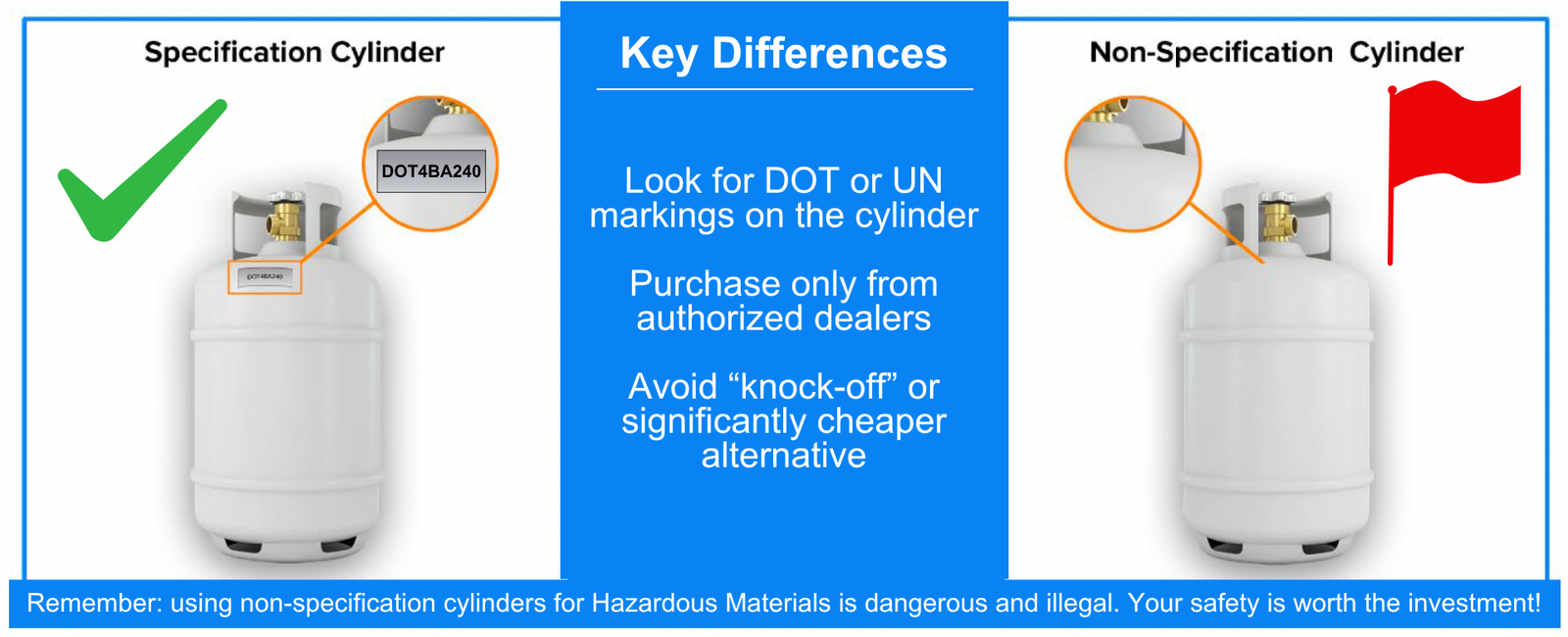The Environmental Investigation Agency (EIA) has raised concerns about the growing use of counterfeit refrigerant cylinders, highlighting serious safety hazards and their link to illegal refrigerant trade. The latest Illegal Trade Bulletin warns that unauthorized cylinders—often sold online—pose significant risks to public safety, the environment, and regulatory compliance efforts.
In January 2025, the US Department of Transportation's Pipeline and Hazardous Materials Safety Administration (PHMSA) issued a safety advisory identifying counterfeit cylinders that do not meet DOT or UN specifications. These include both single-use and two-way refillable cylinders used in refrigerant recovery. PHMSA confirmed that such cylinders, typically manufactured by non-US companies, lack required certification markings and are being filled and transported in violation of federal hazardous materials regulations.
Improperly manufactured or uncertified cylinders are not designed to safely contain high-pressure refrigerants and may cause fires, explosions, property damage, or exposure injuries. PHMSA has emphasized that using or filling these cylinders can lead to civil penalties or criminal prosecution under Title 49 CFR 107.30.
Technicians are legally required to use DOT or UN-certified cylinders when recovering refrigerants during system maintenance. Recovered gases must be sent to EPA-certified reclaimers for proper processing. Use of counterfeit cylinders for this purpose constitutes a violation of hazardous materials regulations.
PHMSA has outlined key indicators of unsafe cylinders, including corrosion, physical damage, or defective valves. Cylinders must also show valid manufacturing and requalification dates before use. Consumers purchasing refrigerant cylinders online are advised to verify product specifications and certification markings, and to return or properly dispose of counterfeit items with the help of licensed HVAC professionals.
The EIA also highlights the role of disposable, non-refillable cylinders in illegal refrigerant trade. Between 2018 and 2020, nearly 90% of illegal HFC import cases reported to the Montreal Protocol’s Ozone Secretariat involved such cylinders. Disposable cylinders are harder to trace, less expensive, and widely used in smuggling banned substances, including CFCs and HFCs, despite being banned in the EU. They remain legal in the US.
Proper disposal of disposable cylinders is critical, as leftover gas—known as the "refrigerant heel"—can leak and contribute to greenhouse gas emissions. According to the EPA, if the refrigerant heel from 95% of non-refillable cylinders in the US is released, it could result in emissions equivalent to 5,388,000 metric tons of CO2 per year.
Industry stakeholders are encouraged to stay vigilant and adopt best practices to prevent the use and circulation of counterfeit and non-compliant cylinders.
Suspected illegal refrigerant activity can be reported confidentially to EIA via
email or
online form, and violations may also be reported to the US Environmental Protection Agency.
